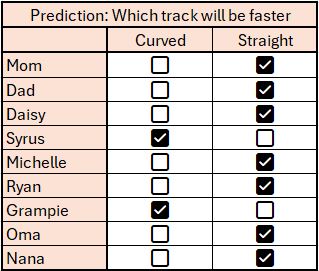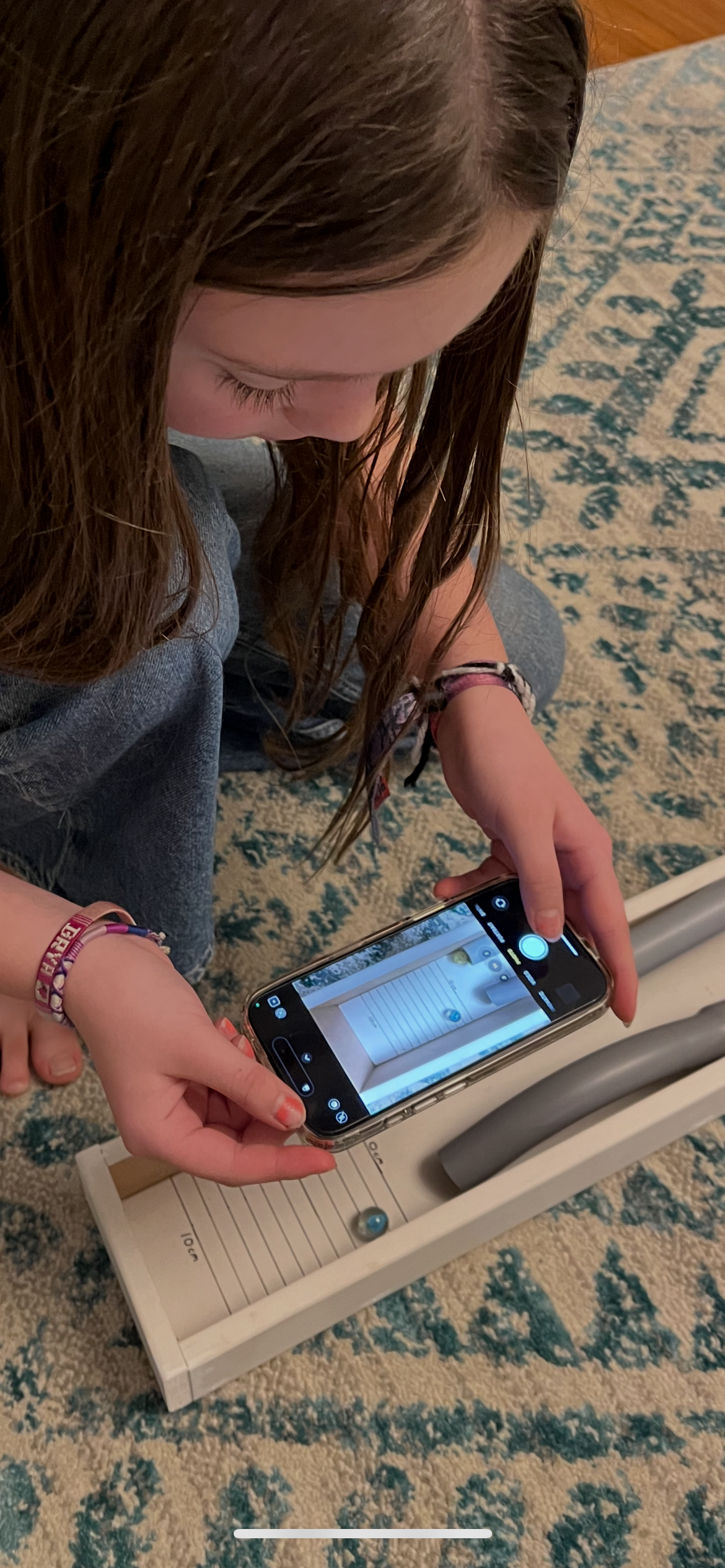Bee`s gravity racer
Grade 5
Presentation
Hypothesis
The Big Question:
Which track is faster?
Curved vs Straight
I predict that all the different weights of balls will travel faster on the straight track compared to the bumpy track, this is because the straight track does not require the balls to overcome uphill sections, the straight track is also shorter than the bumpy track by 5cm.

Research
Preliminary research and design:
First, I had to draw a schematic of how I thought the tracks should look. It turns out that the final product was quite different than what I had imagined.

Finding the materials for designing the model was the most challenging part of my research. I needed to form consistent slopes and angles, that would not shake, bend or flex during the trials, so we could achieve as consistent and accurate results as possible. Another challenge was to keep the balls from leaving the curved track as they gained speed and momentum. I settled on using 3/4-inch conduit that is used for protecting electrical cables. This material worked really well because joining the pre-bent 90-degree elbows created the perfect angles, that stayed consistent for the entire track. The conduit also comes in straight pieces which worked out well for the straight track.


Building Phase:
The next phase was to build the model so I could test my theory and see if my prediction was correct.
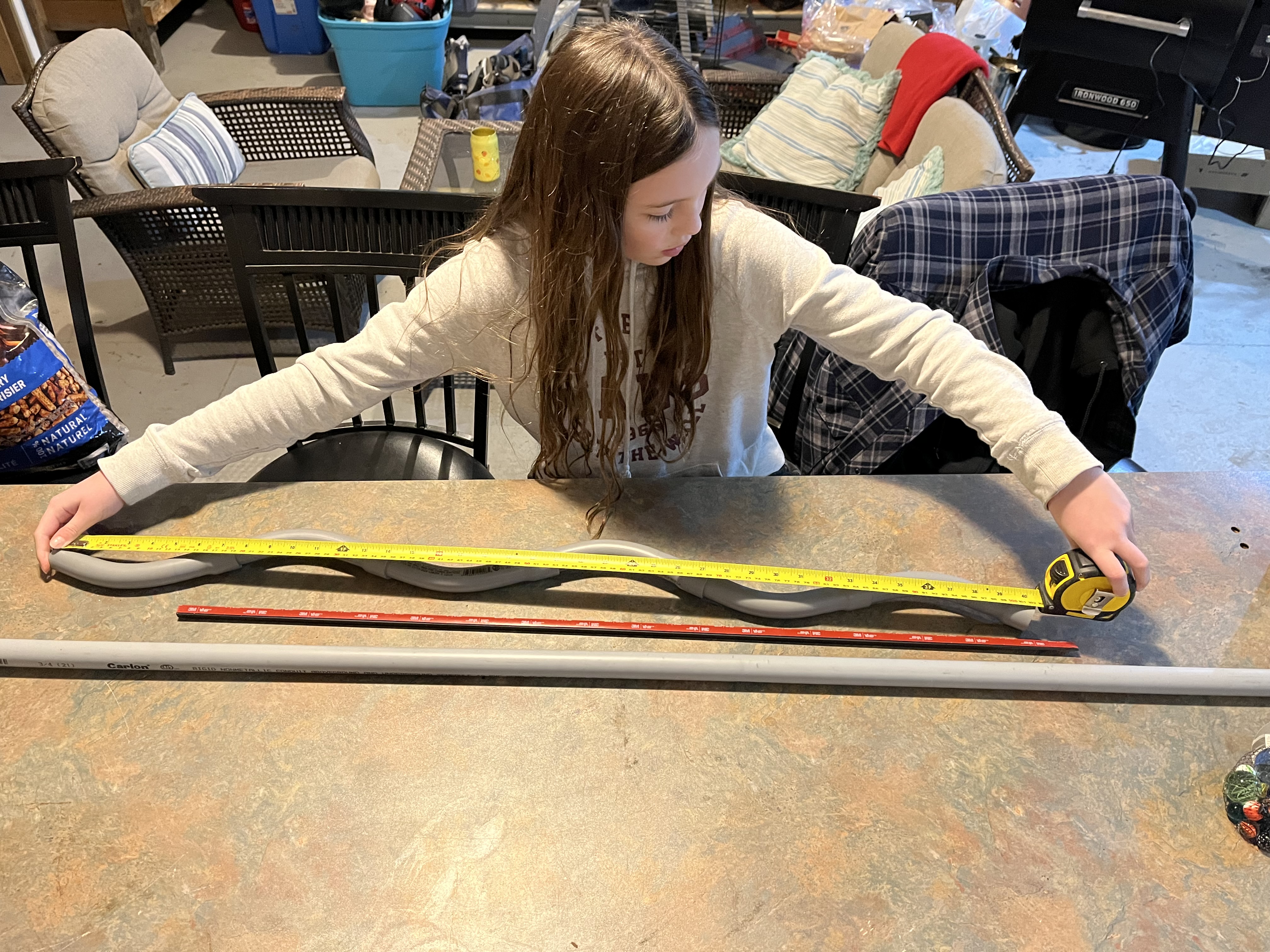
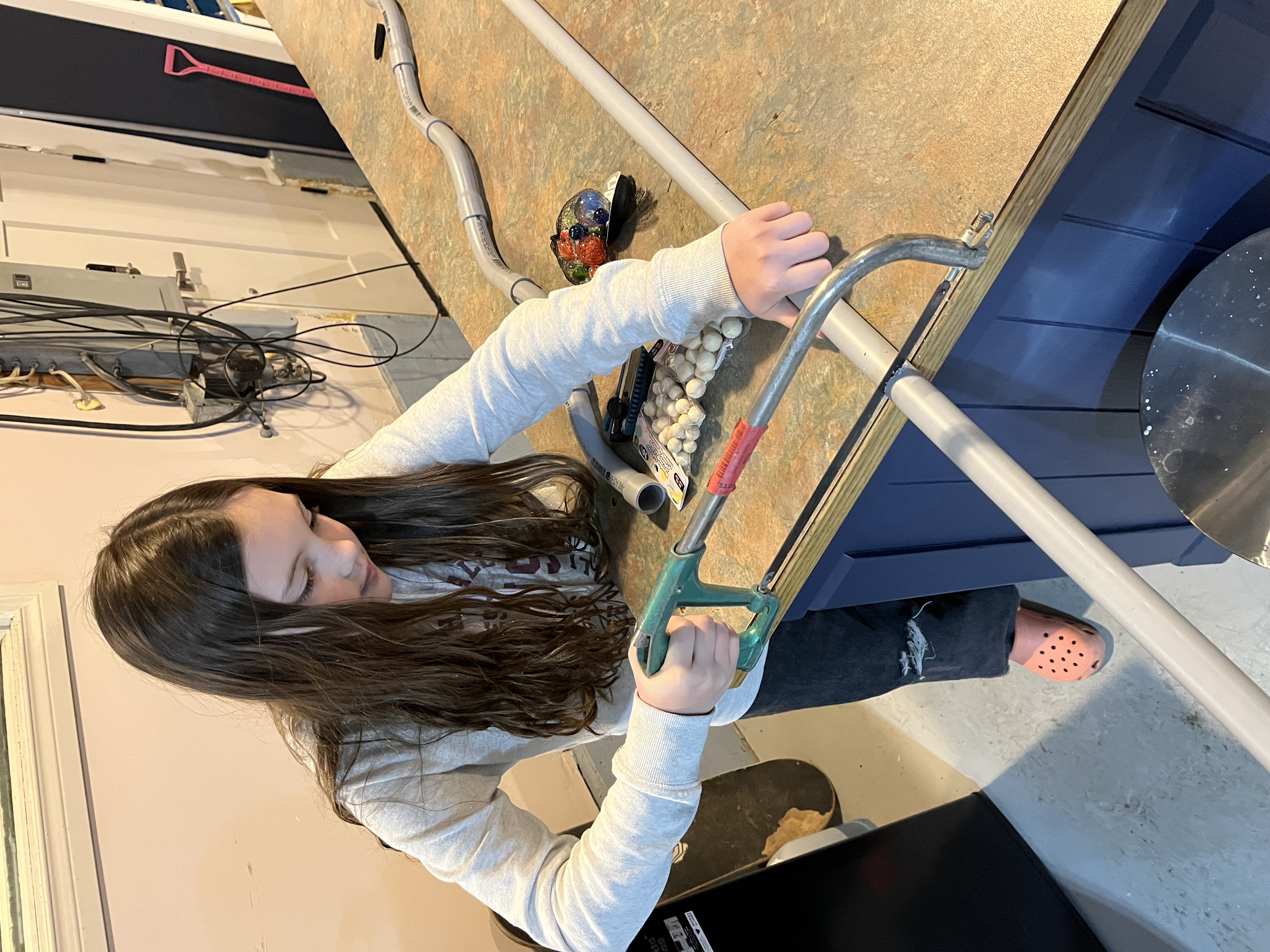
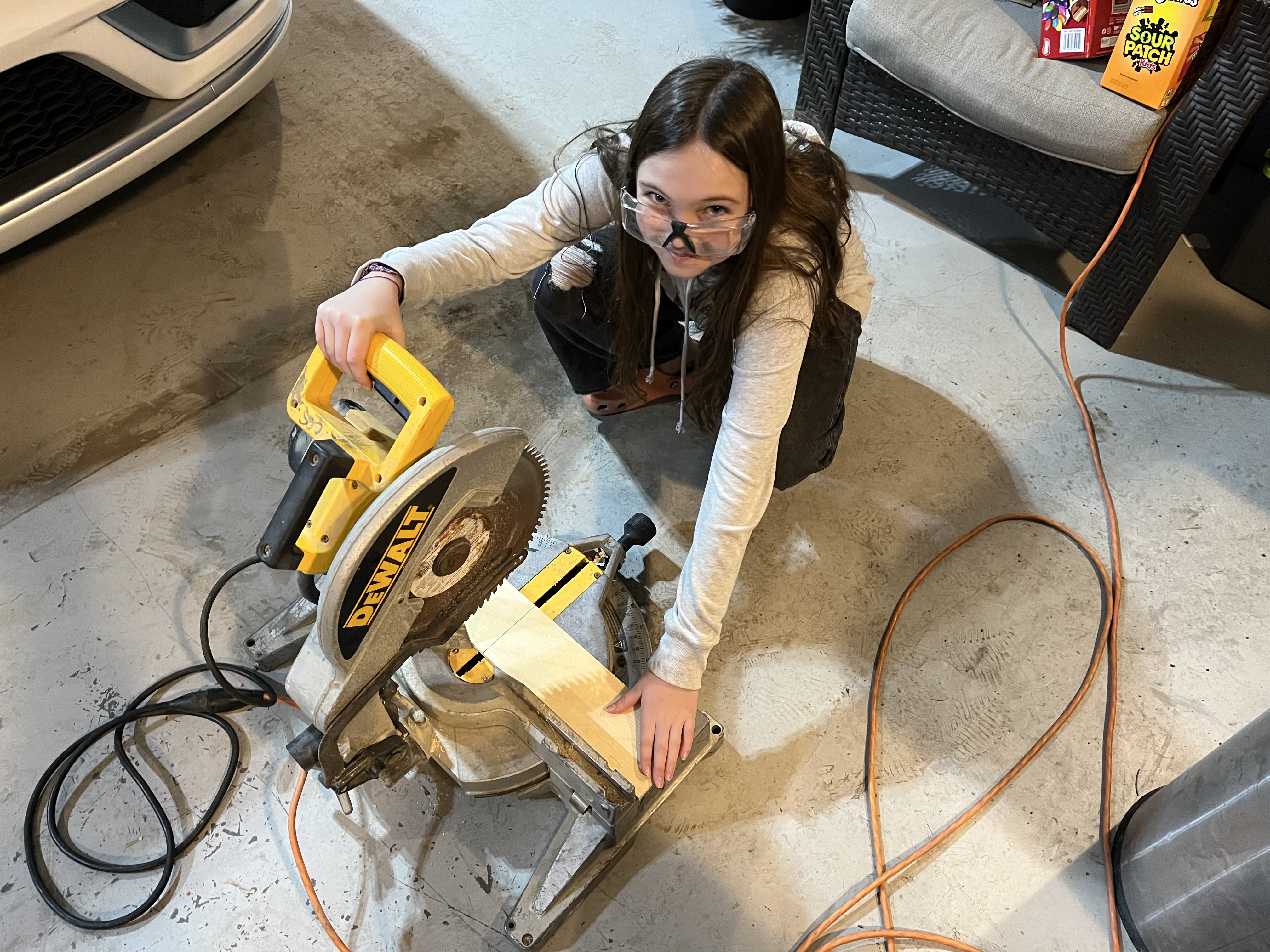
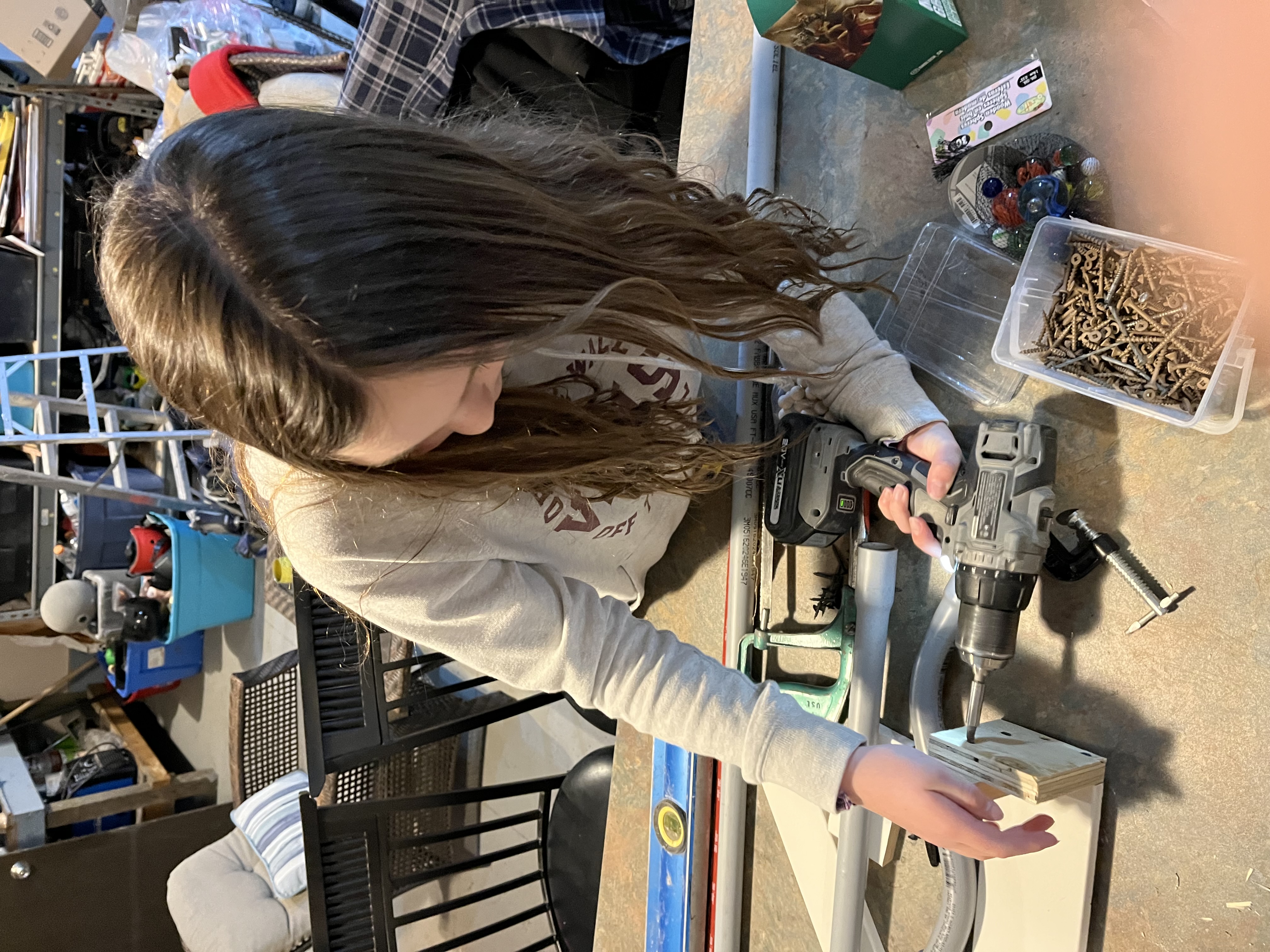
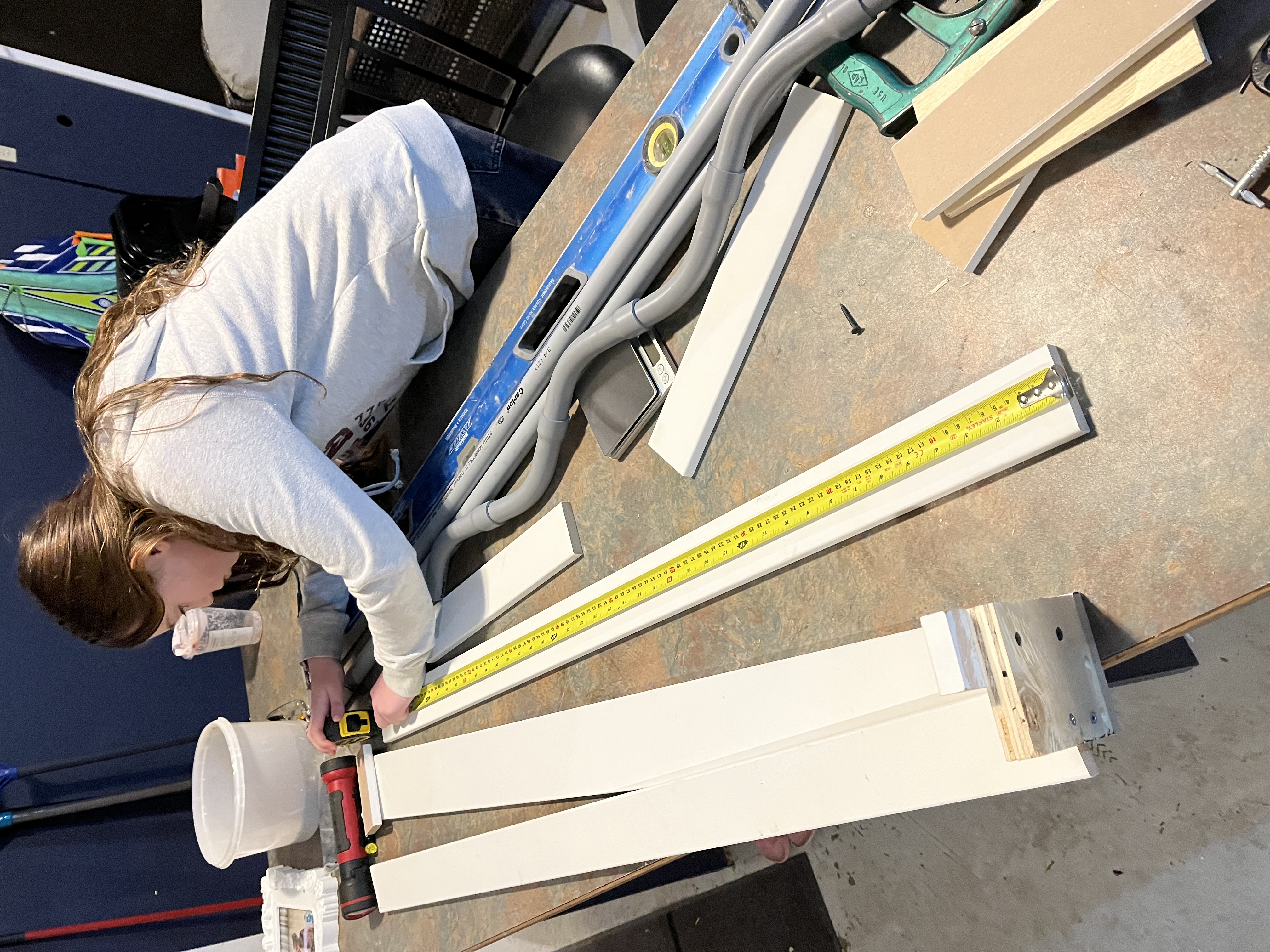


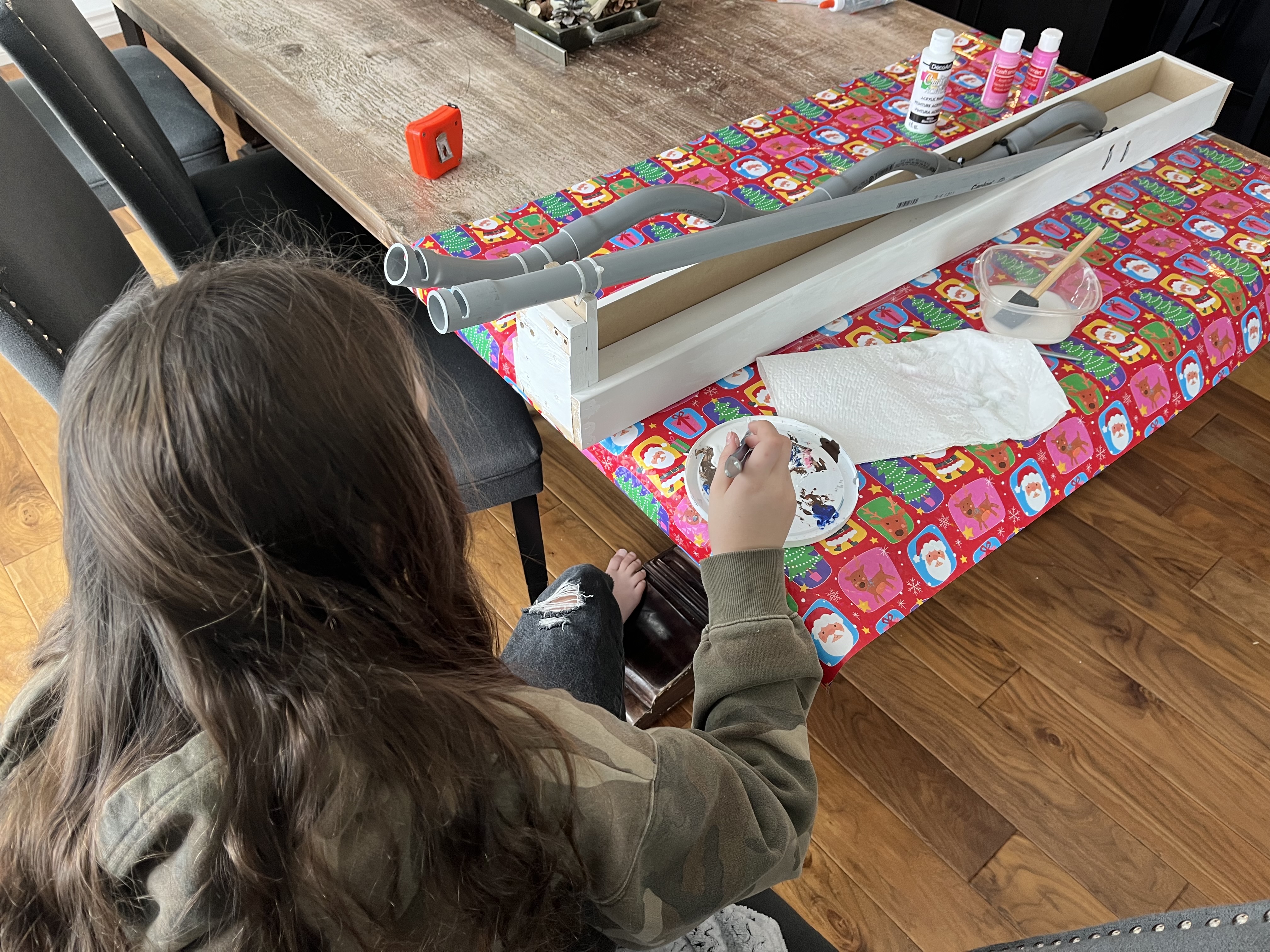
Next, I needed to find the right balls of different weights, this was challenging because they had to be the exact same weight and size for each race. I started out using wood for the lightest ones but couldn't use them because they were not perfectly round which made the results inconsistent. I settled on Plastic, Glass and Steel for the experiment.

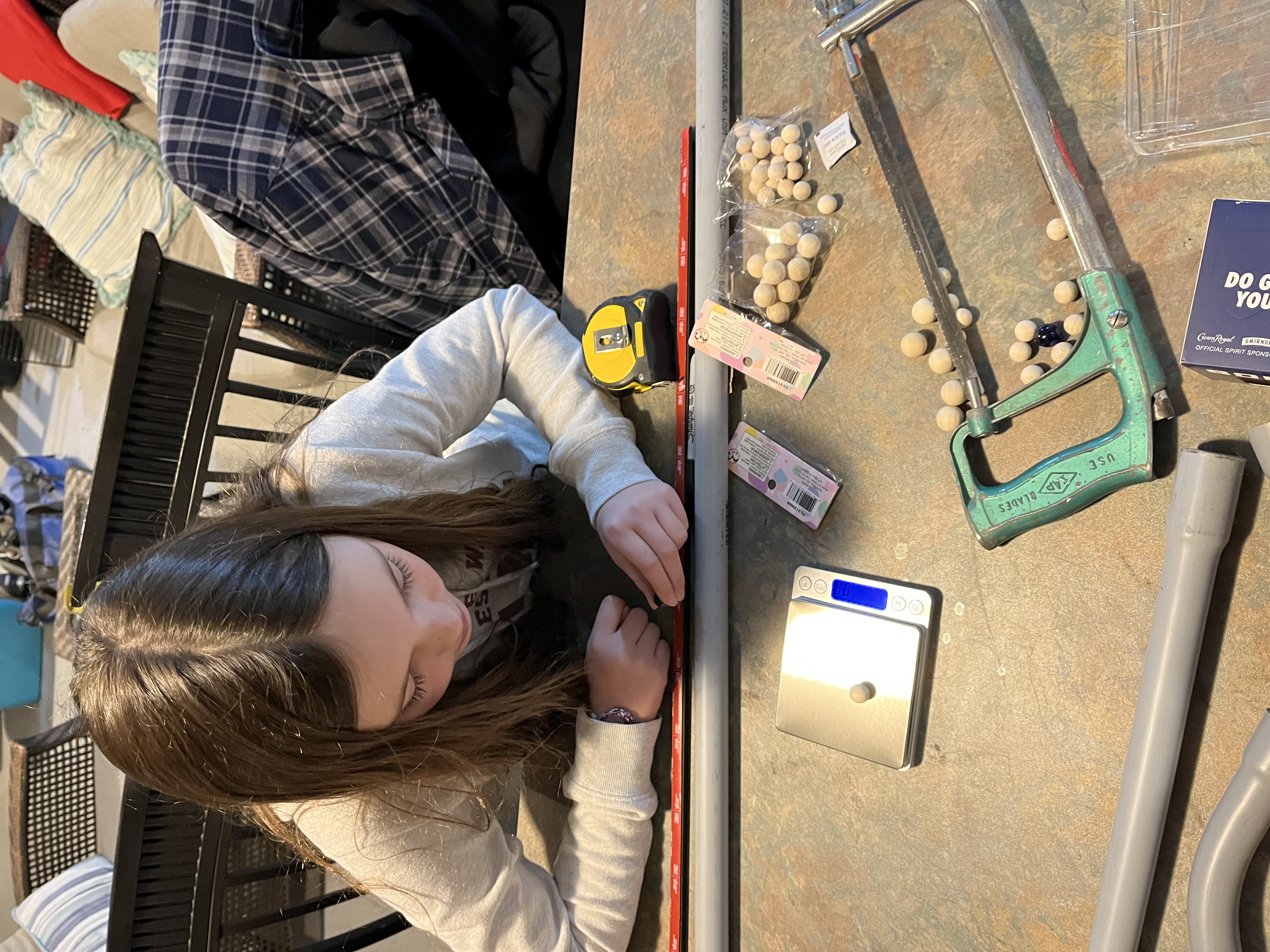
Math and Engineering:
I needed to measure all the distances to be used in calculating the angles and slopes. This was also to make sure the starting points were the same and there were not any major differences that could affect the results.
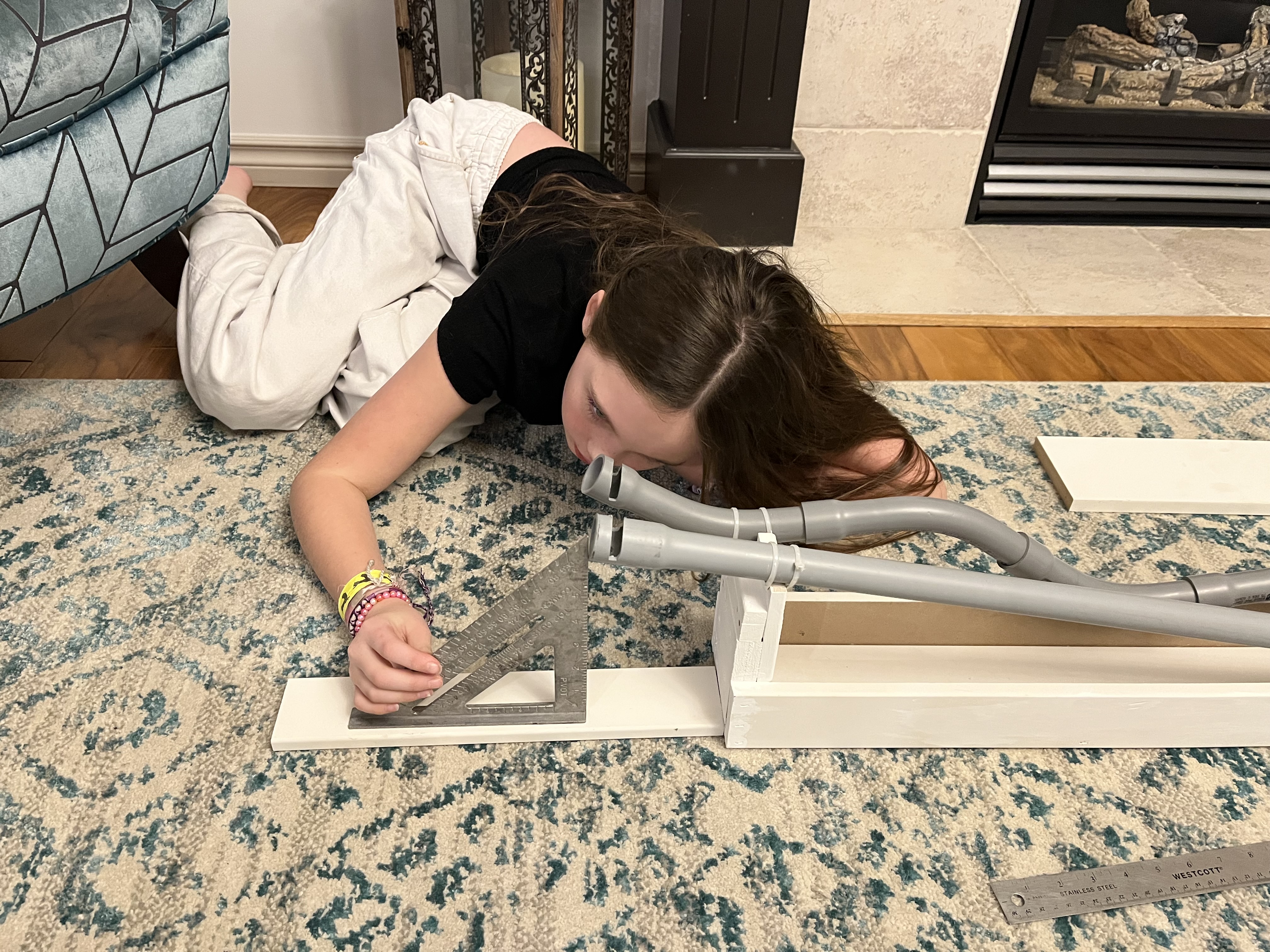

The two formulas that were required for determining the angles and lengths were Pythagorean Theorem and Trigonometry (SOH, CAH, TOA).
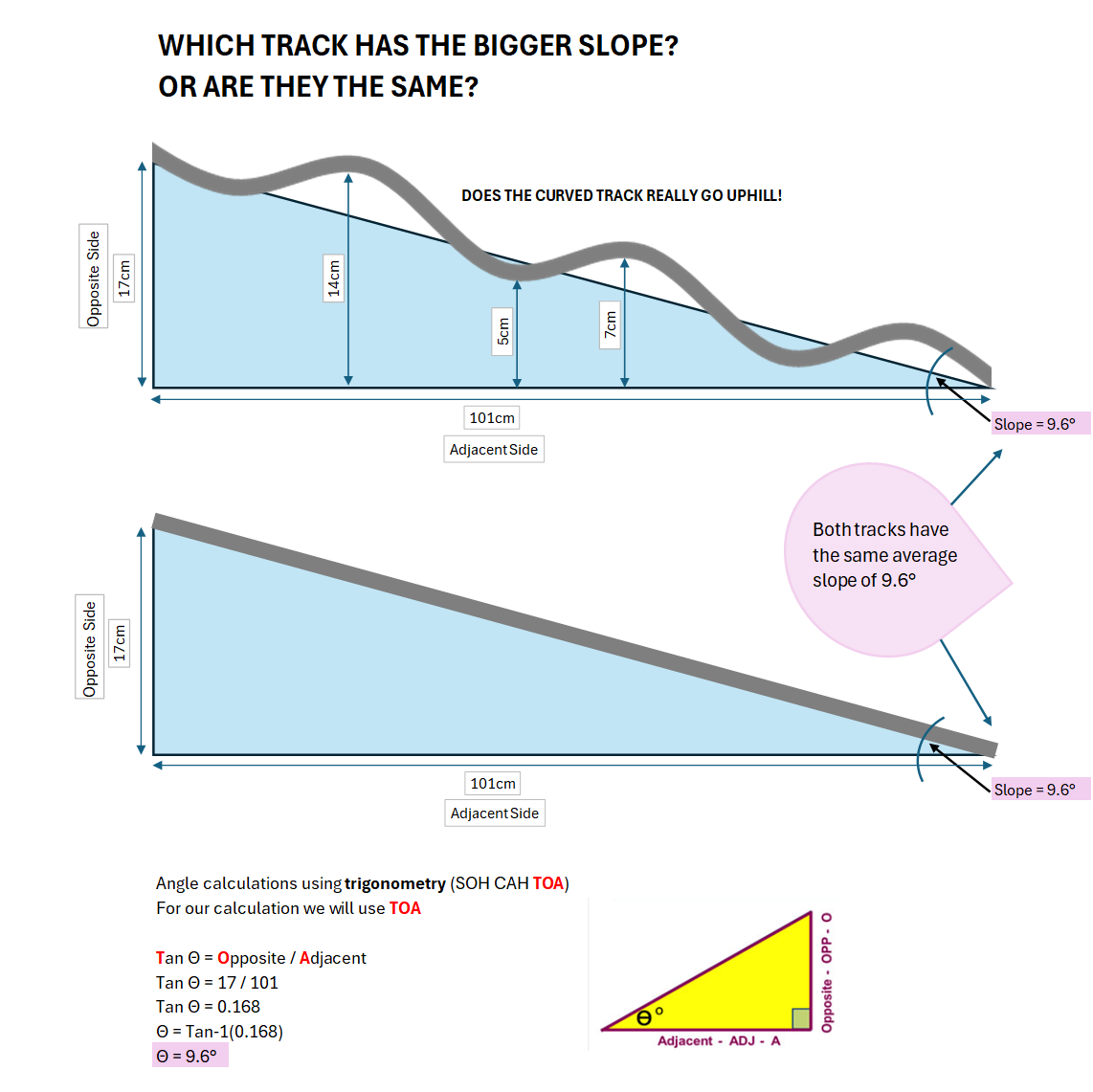
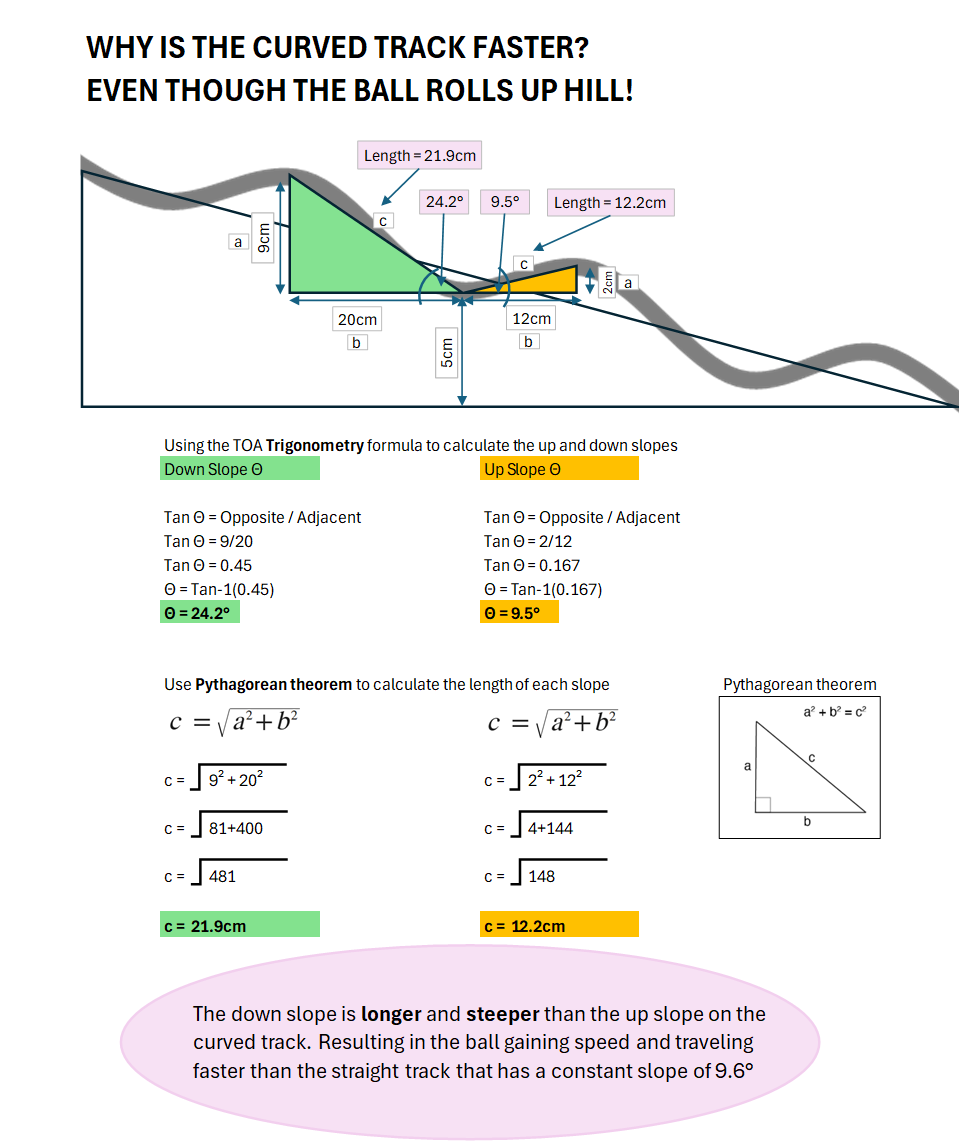
The curved track has a longer overall length. If we were to stretch it out, it would be 5cm longer than the straight track.

Further Research and Interviews:
After I had the racetrack ready to go, I surveyed 10 people to see if they thought the straight track or curved track would be faster. 8 out of 10 people predicted the straight track would be faster, which was the same prediction I had in my Hypothesis.
Variables
Variables
Controlled variables (what stays the same)
My controlled variables for my experiment are:
- The shape of each track
- The average angle of the tracks (9.6°)
- Same materials used on both tracks
- Type of balls for each test
- Number of tests for each type of ball
- Starting position on each track
- Ending position on each track
Manipulated variables (what changes)
My manipulated variables for my experiment are:
- The materials that the balls are made from
- The weight of the different balls
Responding variables (results)
My responding variables for my experiment are:
- Which ball is faster
- Which ball exits the track first
- How much distance is between the balls when they exit the tracks
- Which track won the race
Procedure
Materials & Methods
Materials:
- Plastic ball, Glass ball, Steel ball
- Wood, screws and nails
- ¾” conduit
- Zip ties
- Straight track & Bumpy track with uphill and downhill sections
- iPhone slow motion camera
- Ruler or measuring tape (to ensure track length and angle is the same)
- Notebook and pencil (to record results)
Proceedure / Methods:
1. Set up both tracks on a flat surface to ensure they are stable.
2. Measure and confirm that both tracks are aligned and nothing has shifted.
3. Place the first set of balls (plastic) at the starting point of both tracks.
4. Release the balls and use the slow-motion camera to time which ball comes out first.
5. Record the result in the notebook.
6. Repeat steps 3 to 5 using the glass and steel balls.
7. Test each type of ball on each track at least three times for accuracy.
8. Compare the results to see which track made the balls move faster.
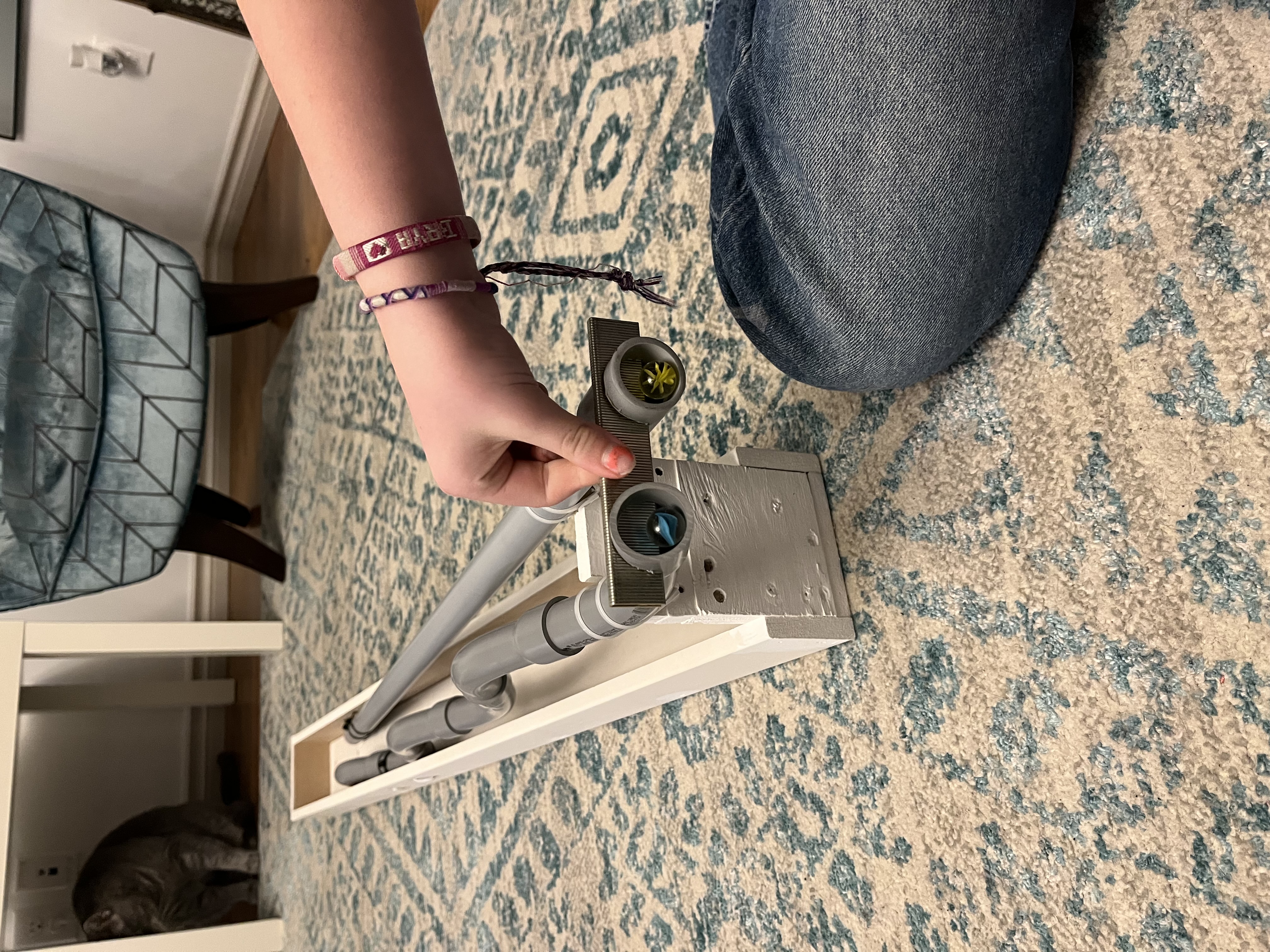
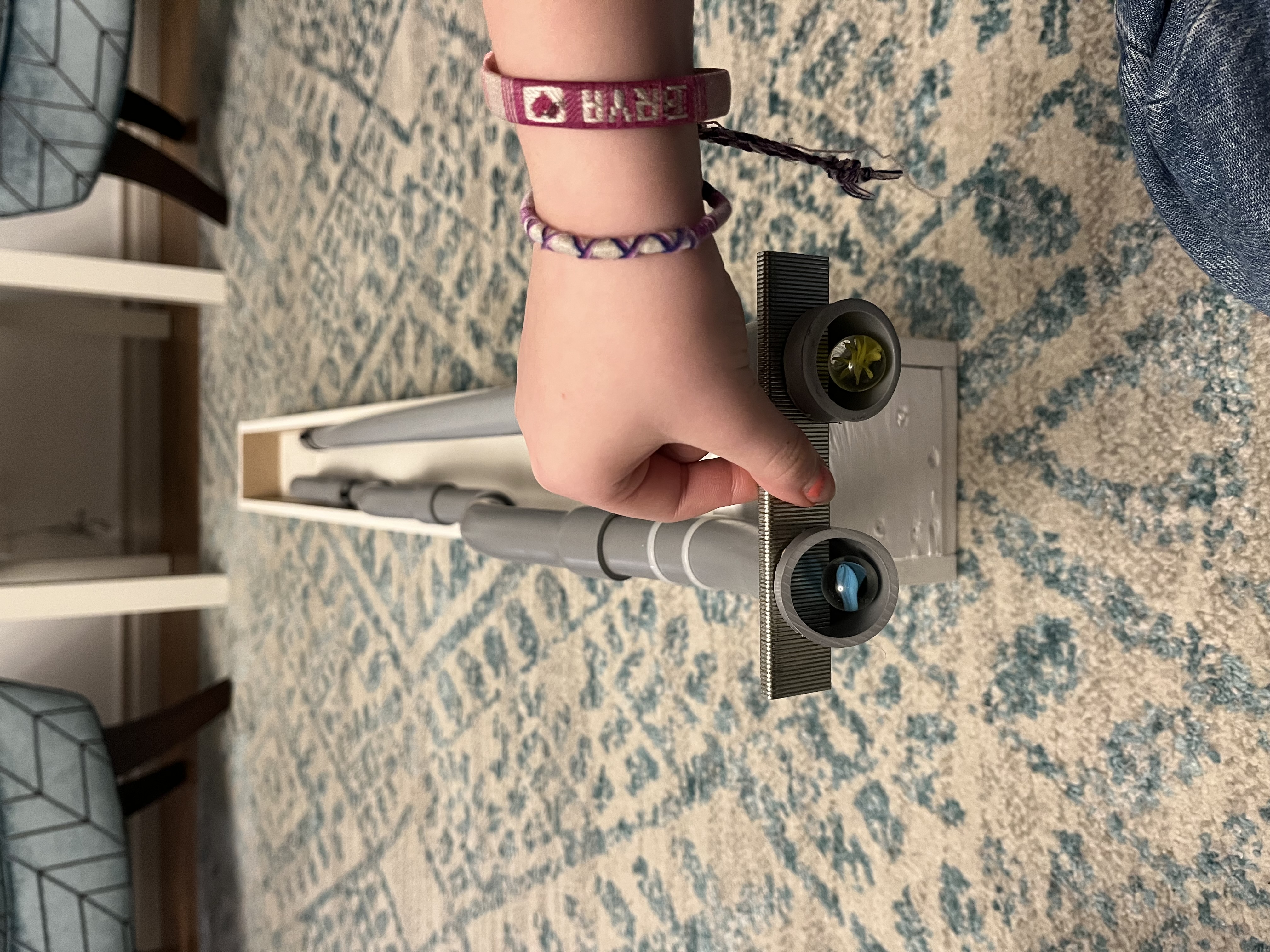
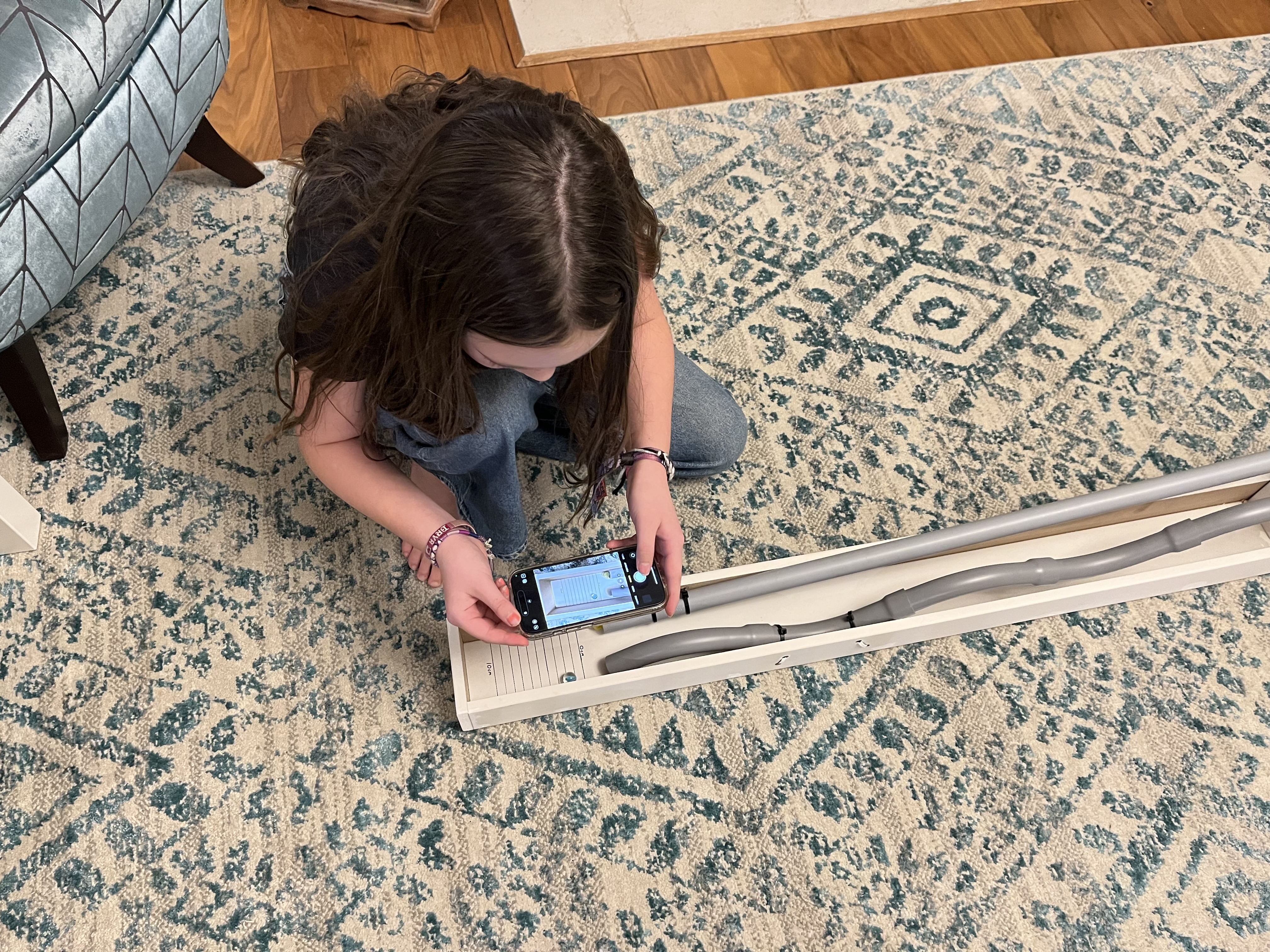


Observations
Observations and Results:
The results showed that the curved track was the fastest in 100% of the trials.
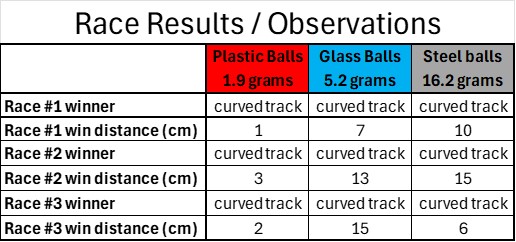
Below shows an unexpected difference between the weights of the balls and how much they won by. The heavier balls on the curved track gained more mommentum and speed than the lighter balls. This resulted in a wider gap between the balls at the finish line. This also shows that gravity has a larger impact on heavier objects than lighter objects.

The photos below show all the race results and win margins:
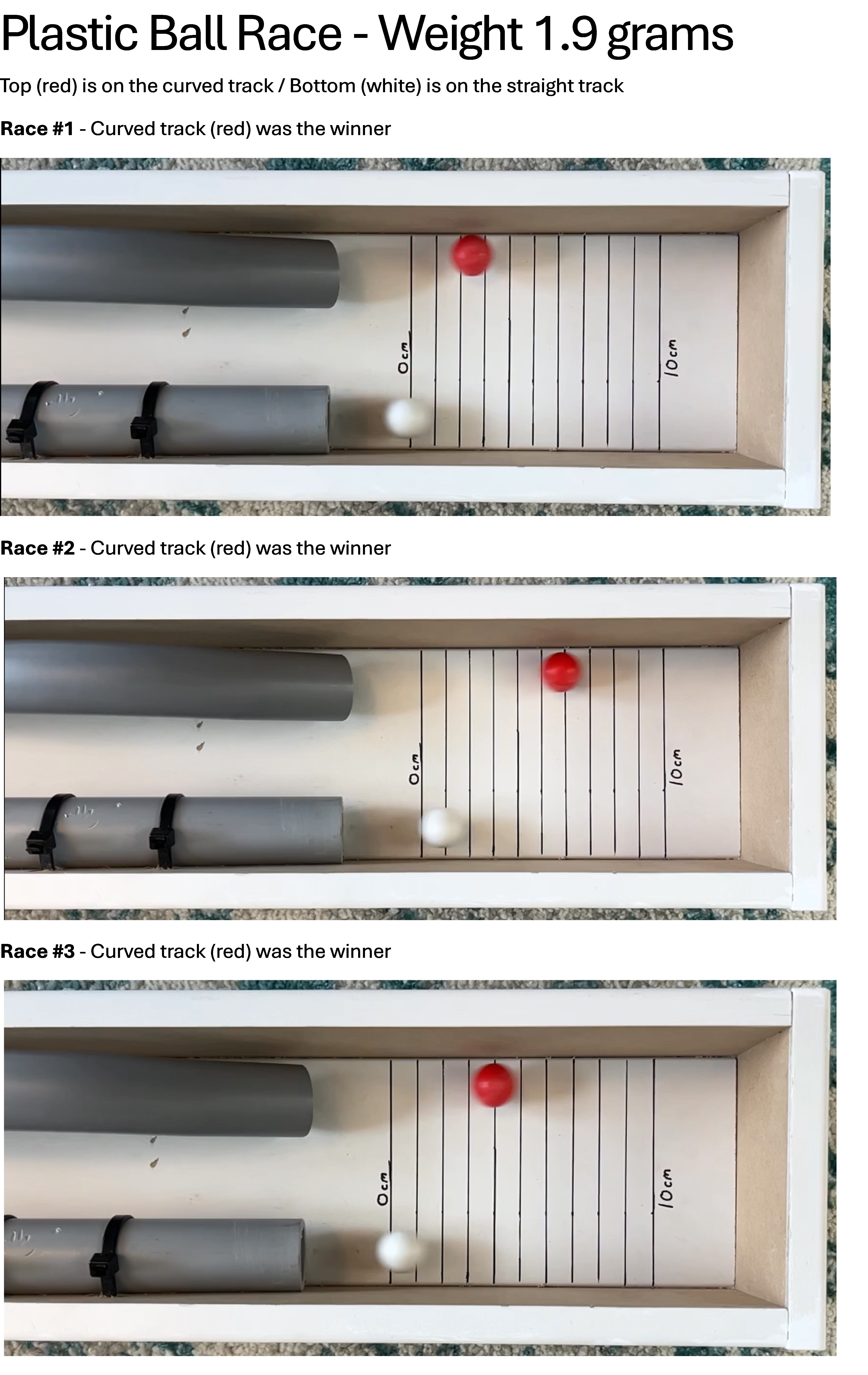
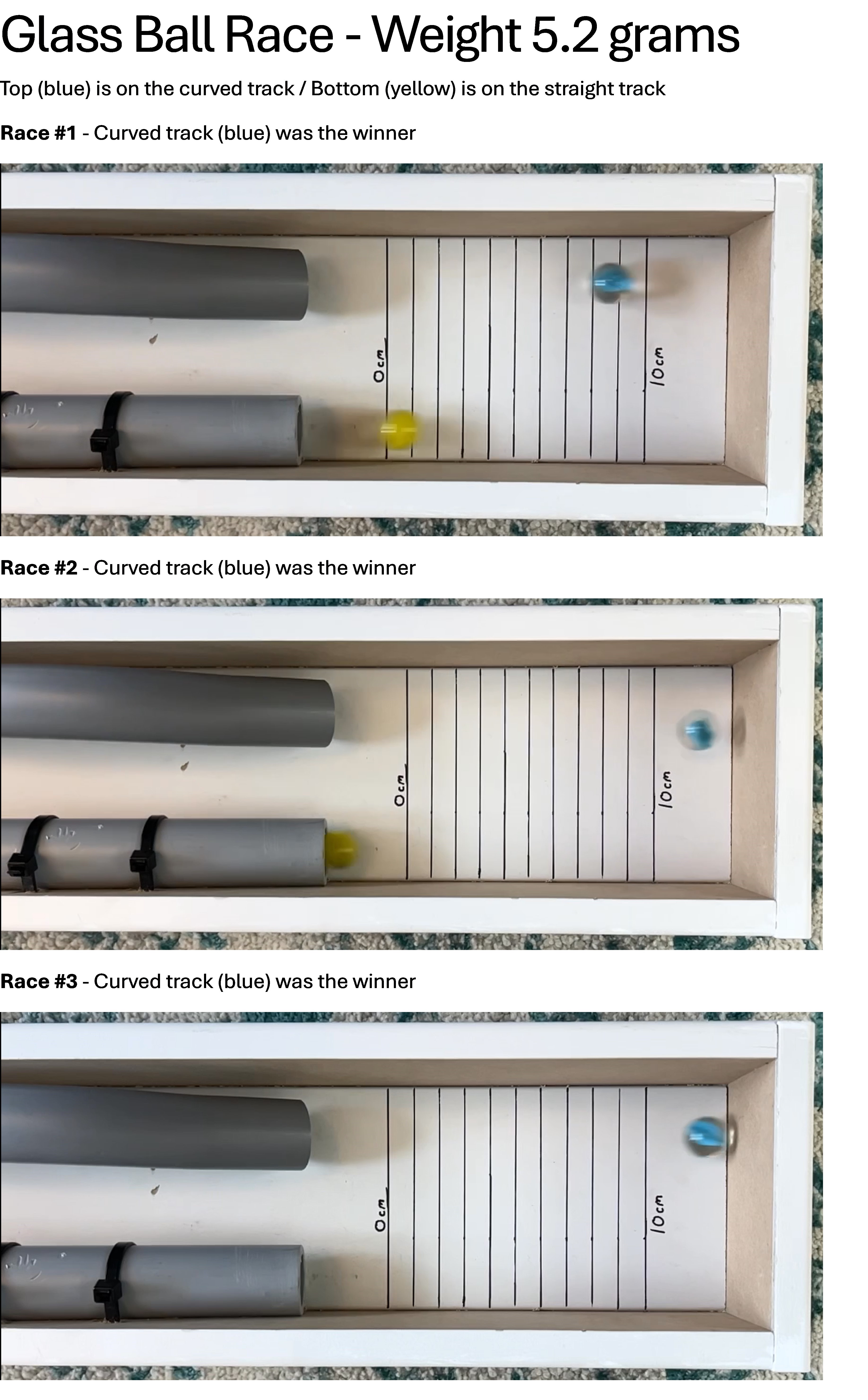
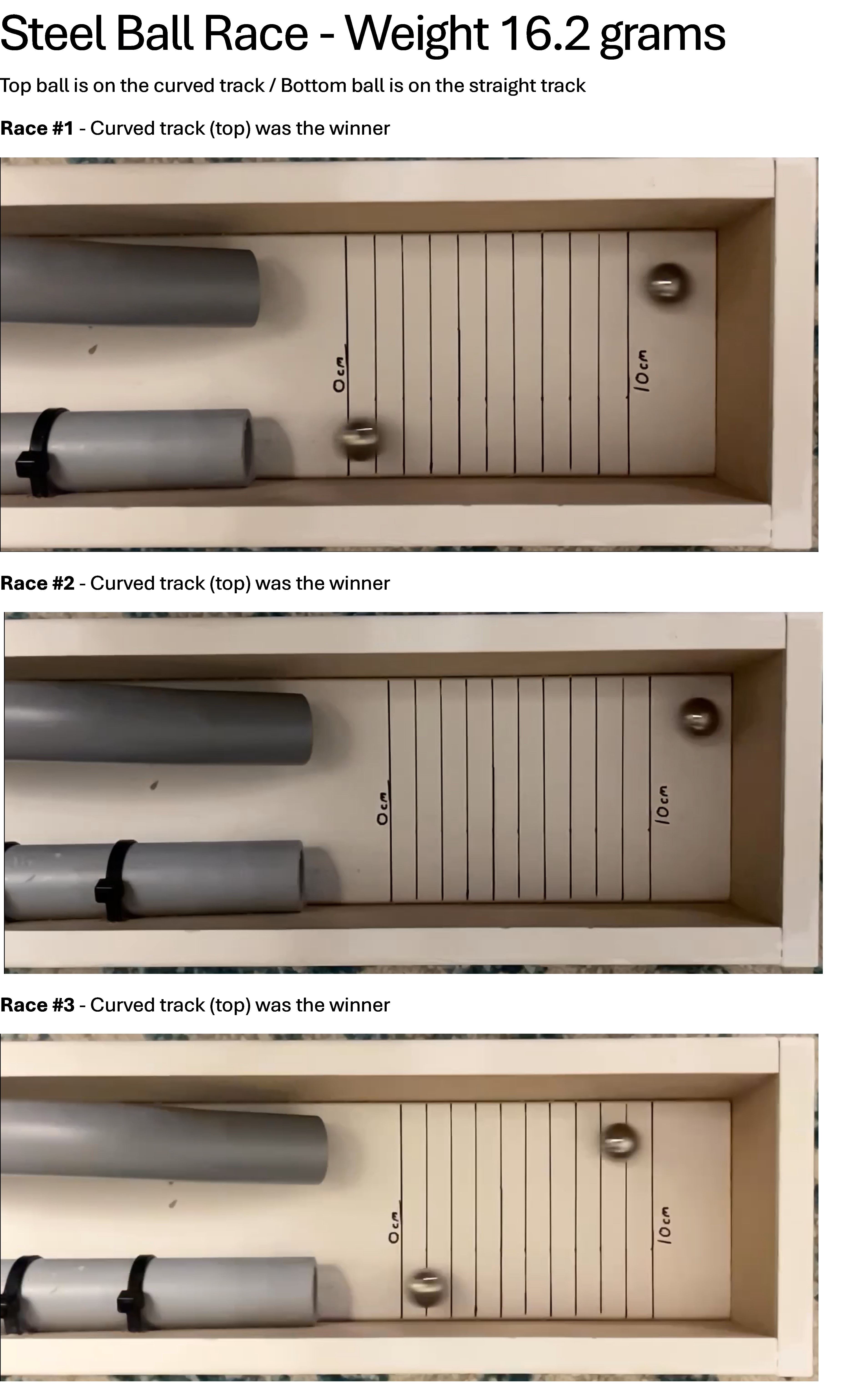
Analysis
I decided that I wanted to evaluate the effect that gravity has on speed and acceleration. My goal was to build a model that could prove the results from calculated concepts. To accomplish this, I built a racetrack model that allowed me to compare between a bumpy track with hills and a straight track with a consistent gradual slope. 80% of the people surveyed thought the straight track would be the fastest, this was because the straight track is 5cm shorter and does not have uphill sections. This was also my prediction as well.
After completing the experiment, I concluded that most people and I were incorrect. In 100% of the trials the bumpy track was the fastest.
Three different weights of balls were used for the races, Plastic (1.9g), Glass (5.2g) and Steel (16.2g). Some further results were observed that the heavier balls won the race by a greater margin, this tells us that gravity has a greater effect on heavier objects than it does on lighter objects. Imagine dropping a feather or a bowling ball off a building, the bowling ball would hit the ground much sooner and with more force. The same thing happens when the balls are rolling down the steep parts on the bumpy track, they gain enough momentum to overcome the slight uphill sections, and the result is that the bumpy track wins the race. The straight track has a steady but slower acceleration which results in a slower overall speed by the end of the race.
Although there were some possible sources of error in the experiment, I feel that my results were accurate, and I am confident that if the error sources were removed the bumpy track would still be the winner.
Conclusion
Conclusion
The results of this experiment did not match my guess that balls would go faster on the straight track. Instead, the balls were faster on the bumpy track. This is because the downhill parts of the bumpy track made the balls speed up, even with the uphill parts slowing them down. This shows that a bumpy track can help balls move faster and the downward acceleration was greater than the upward forces. This resulted in a faster overall speed than the constant slower acceleration on the straight track.
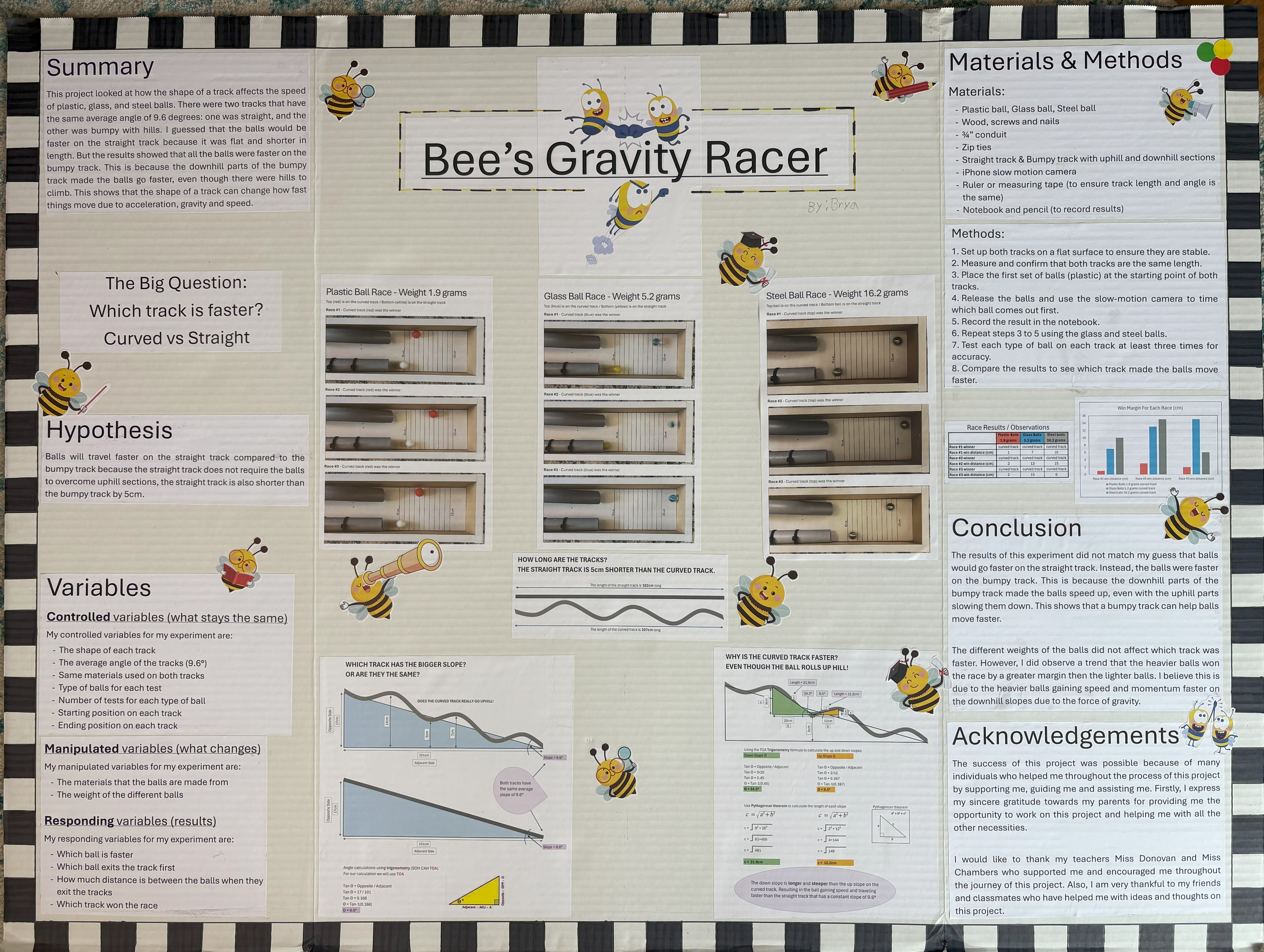


Application
It is important to understand how gravity works and how angles and slopes are affected by gravity. My project helps with understanding and designing everyday products such as roads, amusement park rides, bridges, buildings, piping networks and many other items that we use on a daily basis.
Sources Of Error
Possible sources of error I have identified throughout my experiment are:
- The curved track is made up of jointed pieces of conduit. This means that the balls on the curved track will roll over 5 seams, and the track is not perfectly smooth. The straight track is one continuous section of conduit. This error source is not significant as the curved track was the fastest in all the trials and the seams would only slow down the balls.
- The starting device is designed to release both the balls at the same time, however there could be error resulting from the speed, consistency, and the angle at which the starting device was removed to begin the race.
- The angle at which the balls exit the tracks are slightly different, causing the ball leaving the curved track to have a slight bounce.
Citations
Books:
- "Kinetic Energy: The Energy of Motion", Don Nardo, Dec 28, 2024.
- "Understanding Kinetic Energy", Kristen Petersen, Jan 4, 2025.
- "The Crazy Kinetics: Four Forms of Kinetic Energy", John A. Honeycutt, Jan 5, 2025.
Online Sources:
- "Gravitational Illusions", https://www.youtube.com/watch?v=MBSRPuUibxk, Dec 24, 2024, online.
- "Physics experiment -Ball rolling down curved and straight ramp", https://www.youtube.com/watch?v=61S0KW7e-rc, Dec 24, 2024, online.
- "High road low road track race, potential-kinetic energy tracks//// Homemade science with Bruce Yeany", https://www.youtube.com/watch?v=_GJujClGYJQ, Dec 24, 2024, online.
- "Who is faster? Gravitational Illusions - I was wrong and you? ❤️ C4D4U", https://www.youtube.com/watch?v=09Qnr6BlqSQ, Jan 10, 2025, online.
- "Which is faster * Brachistochrone Curve ❤️ C4D4U", https://www.youtube.com/watch?v=TIopneBToLQ, Jan 10, 2025, online.
- "Which Ball Goes Fastest? Which Ball Goes the Furthest? Fun Physics Ball and Ramp DEMO", https://www.youtube.com/watch?v=4QmpKkU1OP0, Jan 18, 2025, online.
Acknowledgement
The success of this project was possible because of many individuals who helped me throughout the process, by supporting me, guiding me and assisting me. Firstly, I express my sincere gratitude towards my parents for providing me the opportunity to work on this project and helping me with all the other necessities.
I would like to thank my teachers Miss Donovan and Miss Chambers who supported me and encouraged me throughout the journey of this project. Also, I am very thankful to my friends and classmates who have helped me with ideas and thoughts on this project.
I would also like to thank the Judges for volunteering their time, and their dedication to making the Calgary science fair a huge success.


